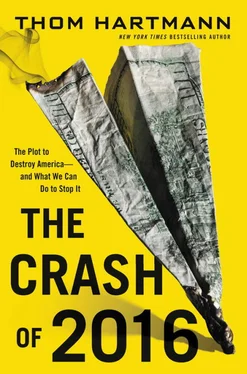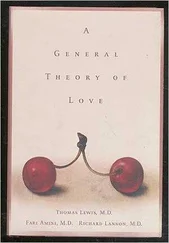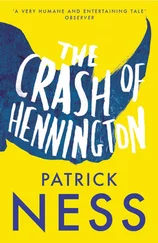So there was an incredible energy among progressives in Wisconsin that year, one that was most palpable at the Fighting Bob Fest. But it was when I was being shuffled around the Badger State by taxicab that I caught a whiff of true progressivism at work. It was on a ride back to my hotel that I encountered an economic model that could be our nation’s savior after the Great Crash of 2016.
There’s something just below the surface that most of us are unaware of in America.
While the all-powerful profit motive dominates the global economy, there’s a new and very far-reaching economy that’s sprung up in just the last few decades that’s trying something different. It’s the cooperative economy.
Currently, one billion people around the world are members of cooperatives.
While each cooperative is run differently, they all have the same characteristic: democracy in the workplace. There is no all-powerful CEO determining the pay for himself and his workers, there is no secret board of directors looking out for the best interest of unknown shareholders.
A cooperative is managed and owned by its workers. Usually through a small fee, an employee can buy a stake in the co-op and be part of the decision-making process—one person, one vote. As business gets better, the profits don’t go to the very top, they are spread among the workers, incentivizing everyone to work harder and sell more together—hence the name “cooperative.”
In communism everything is owned by the entire state, by everybody. That is a profound and radical difference from co-ops. Worker-owned co-ops are arguably a form of capitalism, where workers hold the capital in individual companies. With communism, the state controls the means of both supply and distribution.
And a billion people around the world rely on cooperatives—from people banking at credit unions to farmers joining together to sell their crops as a cooperative enterprise. Not only that, the United Nations estimates that 3 billion people, nearly half the global population, has been positively affected by a cooperative enterprise. It’s no coincidence that cooperatives are popping up so frequently and having such an impact around the world at this particular moment.
In his book America Beyond Capitalism , historian and author Gar Alperovitz refers to the emerging cooperative model as the new way forward in a global economy that has witnessed state socialism fail and is now witnessing corporate capitalism fail.
I had a conversation with Gar and he told me, warning about the impending failure of corporate capitalism, “There’s either another way forward over the long haul or I think we’re in for real trouble and decay—and decay is what we’re seeing.”
The rest of the world has already seen that decay and has moved toward co-ops.
In 2001, Argentina went into an economic crisis after it told the IMF to get off its back and defaulted on its $132 billion foreign debt. Suddenly, the world’s seventh largest economy at the time collapsed. A quarter of the population was unemployed; the middle class disappeared into the working-poor class. People went hungry and turned desperate, leading to a surge in violence and crime. And many of the 1 percent fled or moved their money and assets offshore.
I was in the nation’s capital, Buenos Aires, in September 2002 to give a speech. I was staying with friends in an upper-middle-class part of town (Palermo), and the crash was beginning to resolve. The looting of the previous year was over, the new president was stabilizing the country, the peso was becoming stable, but the unemployment crisis was still very, very real.
One of the clearest memories I have of that time and that visit was of driving down the streets of this nice neighborhood and seeing, in front of every third or fourth house, a pile of furniture or TVs or tools with a for-sale sign and price. People were selling their belongings just to pay for food and rent.
With no one able to buy their goods, factory owners in Argentina had shut down in search of new consumers and new workers elsewhere. Collapses aren’t good for business. This was a nation that had seen its social democracy overthrown and replaced by a corporate capitalist system; and that system had just imploded and hit rock bottom. The country was now desperately searching for a new way forward.
And they found it right in front of their eyes.
In the weeks after the crash, the people began returning to the now-empty and gutted factories that they had worked in before the crash. Initially, they just started sleeping there, hoping they’d be first in line to work should the CEOs ever return and open up shop again. But that never happened.
And then they just started working on their own. They fixed up the machines, elected a small commission of people to coordinate the work, and went right back to manufacturing stuff. Through democratic procedures, the workers decided how they would spend the profits, first paying off the debts the factory owed to get it back on its feet, then spreading the rest out in salary among themselves.
Since then, the cooperative model has flourished, and Argentina is again a thriving economy less than a decade after the crash. Today, there are 16,000 cooperatives in Argentina, employing 300,000 people and making up 10 percent of the nation’s GDP. One out of every four Argentinians does business with a cooperative and thus has some sort of say in how money is spent in the economy.
Gar calls this “democratizing capital,” which is taking the flow of money—whether it’s workers’ wages, reinvestment, or profits—and putting it up to a vote among those who are most affected by that money, such as the workers themselves, the customers, and the community. That’s different from corporate capitalism, in which the CEO or a small board of directors and shareholders exclusively makes the decisions about capital.
For decades, our economy has felt the pain of corporations deciding to close millions of factories and send tens of millions of jobs offshore. It has been polluted by millions of tons of toxic gas into the atmosphere and ground and water that have poisoned entire cities. And it has been victimized by theft, as 100 percent of the excess profits made thanks to forty years of automation and increased efficiency have gone to corporate executives rather than paid to workers through higher wages and more leisure time. Given all of this, democratizing capital sure seems like a damn good idea.
Not only that, cooperatives can be just as competitive in the global market as transnational corporations.
There’s a small town in Spain, nestled away in the shadow of a mountain that used to house a vicious dragon. It’s called Mondragón—and it’s home to the largest cooperative federation in the entire world.
That dragon—now long extinct—was likely a brutal lord or local king who terrorized the people of the small town during the feudal dark ages. But now, as the United States and other Western economies descend into a form of neofeudalism with predatory transnational corporations terrorizing labor around the world, Mondragón is a beacon of hope for a new capitalism.
Back in 2009, Louise and I visited the town that lies in the shadow of the mountain, as well as the Mondragon Cooperative, which employs more than ninety thousand people in more than 250 different companies focused on retail, finance, industry, and knowledge. In 2008, Mondragon’s revenue was $24.2 billion—and every single penny of profit was either reinvested back in the business, given to charity, or paid as dividends to Mondragon’s worker-owners.
Unlike the top-down nature of most capitalistic businesses—and even communism—Mondragon and other cooperatives have flipped the pyramid upside-down. There are no CEOs making two thousand times more than the average worker, there is no board demanding higher and higher profits and pushing for offshoring, there is no contract with an outside acquisition firm, such as Mitt Romney’s Bain Capital, to “trim the fat.” The workers are trusted to determine the best direction for their company, for themselves, and for the economy.
Читать дальше












